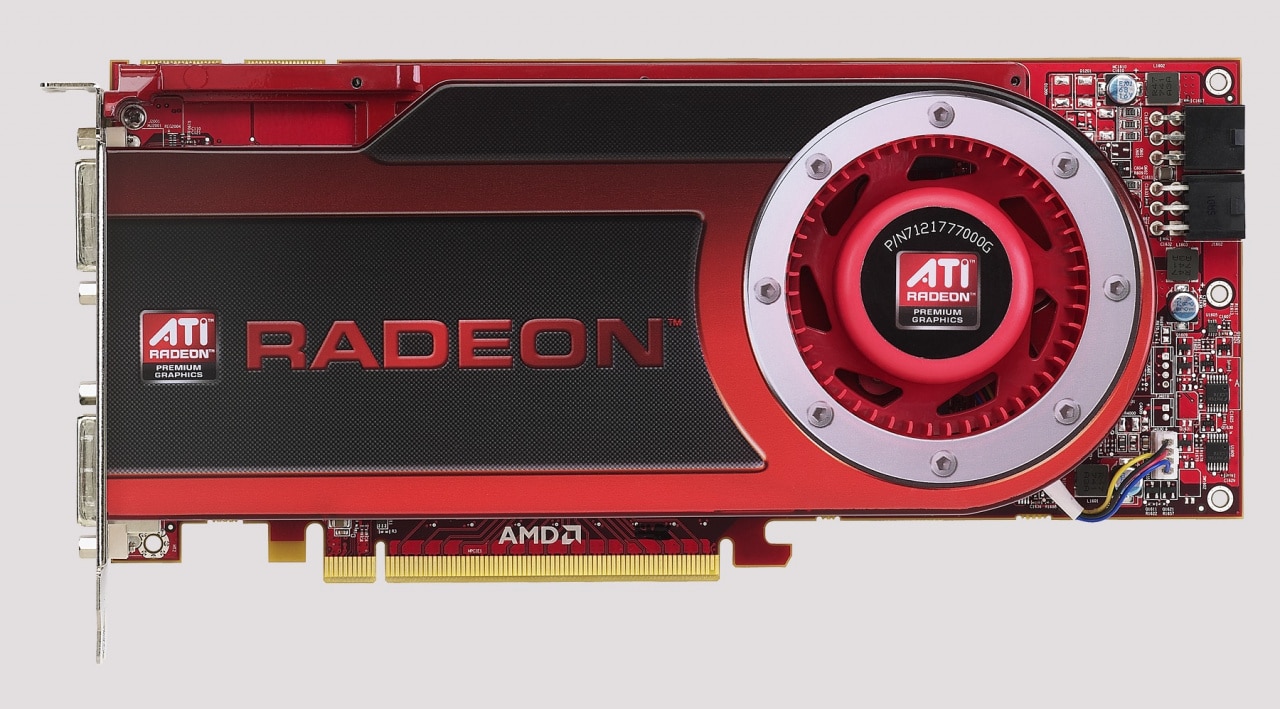On June 16, 2008, Nvidia released the Geforce GTX 280 and GTX 260, which for their time were not bad graphics cards. However, it took just over a week before AMD met up with the Radeon HD 4000 series, which with an unexpected number of stream processors and new memory technology offered unexpectedly fierce competition.
Grafikkretsen RV770 – The Little Chip That Could
The RV770 graphics circuit was condemned by many in advance, as rumors said that it would only get 480 stream processors or 50 percent more than in the RV670 in the Radeon HD 3870. Nvidia therefore expected to ravage freely in the performance segment with the GT200, while the aging G92b with Geforce The GTS 250 at the helm would hold the bar against ATI.
Instead, there were 800 stream processors and a narrow memory bus of 256 bits, which was combined with the then fresh memory technology GDDR5. The sole supplier was the memory manufacturer Qimonda, and relying on this AMD later acknowledged was a fruitful opportunity – without the GDDR5, the RV770 would not have been able to compete with Nvidia in the performance segment.
The result of AMD’s design choice with a narrow memory bus and manufacturing on TSMC’s 55-nanometer technology made the graphics circuit RV770 with its 956 million transistors measure in at 260 mm² – less than half as large as the massive GT200 from Nvidia which measured in at 576 mm².
The significantly smaller graphics circuit gave AMD better margins, which meant that they could put a lot of pressure on Nvidia. The Radeon HD 4870 with 512 MB GDDR5 cost $ 299 and outperformed the Geforce GTX 260 for $ 399. The Radeon HD 4850, which had to make do with GDDR3 memory, became a real bestseller with its $ 199, which at the end of its life cycle was pushed down to the thousand dollars ($ 99).
The low prices did not only make consumers open their eyes to AMD. Many partner manufacturers who sought better margins and who had previously dismissed AMD also jumped on the bandwagon, while those players who chose to remain loyal to Nvidia as exclusive partners were under heavy pressure.
The most talked about team change was XFX, which was previously exclusive to Nvidia and completely switched to AMD with the Radeon HD 5000 series. It was rumored that even EVGA had its eyes on AMD, but that Sapphire with its around 40 percent market share for Radeon graphics cards saw EVGA as too great a threat and appealed to AMD not to let the company into the heat.
The introduction of the Radeon HD 4870 with GDDR5 memory and the little sibling HD 4850 followed a rarely seen tug-of-war between Nvidia and AMD, where the latter constantly had the upper hand by being able to offer lower prices than was even possible for Nvidia.
It is around this that it is often considered that Nvidia began to lose grip, something that was consolidated with the transition to 40 nanometers and Fermi. Despite the painful defeat, Nvidia never dipped below 50 percent market share no matter how aggressively AMD priced its graphics cards.
What are your memories of the ATI Radeon HD 4870 and the graphics battle against Nvidia’s alternatives? Tell us in the comments!















